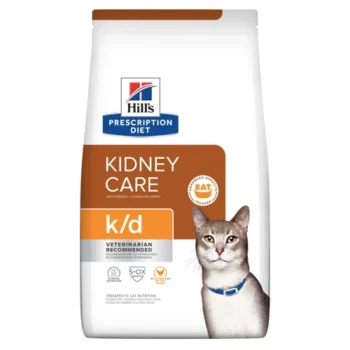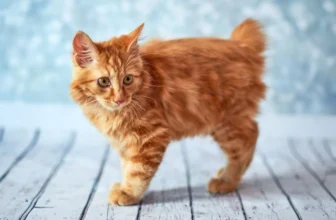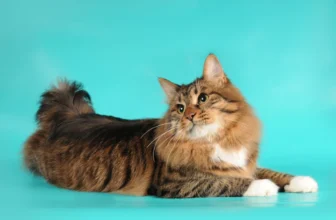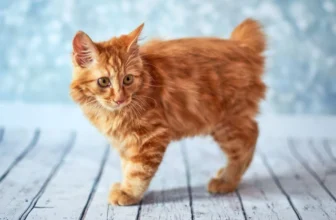As a cat owner, have you ever found yourself in the pet food aisle, staring at the endless options available, wondering which food is truly the best for your beloved American Bobtail? Reading cat food labels can be overwhelming, with a never-ending list of ingredients and confusing nutritional information. However, it’s crucial to understand what’s in your cat’s food to ensure they are getting the proper nutrition they need to thrive. In this guide, we will break down the components of a cat food label and provide you with the knowledge to make an informed decision about your furry friend’s diet. So, let’s dive into the world of cat food labels and uncover the secrets to ensuring your American Bobtail is getting quality nutrition.
Why It’s Important to Read Cat Food Labels
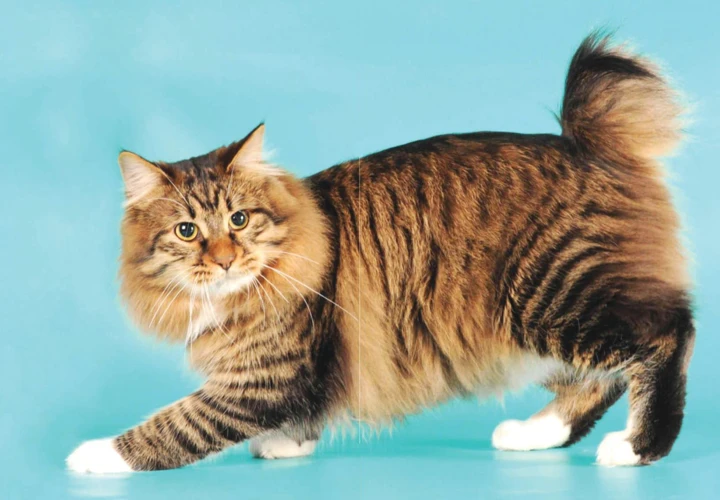
Providing your American Bobtail cat with a nutritionally-balanced diet is crucial for their overall health and wellbeing. However, with so many different cat food options available in the market, it can be challenging to determine which one is suitable for your feline friend. This is why it’s essential to read cat food labels thoroughly before making a purchase. By doing so, you can ensure that you are selecting a high-quality cat food that meets your cat’s nutritional needs. In this section, we will dive deeper into the reasons why it’s essential to read cat food labels and highlight what aspects you should pay attention to. Understanding these factors will help you make informed decisions about your cat’s diet to keep them healthy and happy.
Understanding Ingredient Lists
Before making a purchase decision about the cat food, you need to examine the ingredient list in detail. The list helps you to understand the nutritional value of the food and determines whether it will provide a balanced diet for your American Bobtail.
| What to Look For | What to Avoid |
|---|---|
| Whole meat or fish | Meat by-products, fillers (such as corn, wheat, and soy), and artificial preservatives |
| Natural ingredients | Artificial flavors, colors, and sweeteners |
| Named protein sources | Generic meat sources, such as “meat meal” or “animal by-product meal” |
| Healthy fats and oils | Unspecified sources of fat or synthetic fats like “animal fat” or “vegetable oil” |
| Probiotics and prebiotics | Added sugars, artificial preservatives, and fillers like rice flour |
An ingredient list is usually in descending order by weight. The ingredients listed first are the most plentiful in the food. Look for the protein source that should be the primary ingredient in the food. Besides that, whole meat or fish is a good source of protein as it contains most of the essential amino acids that your cat needs.
Be wary of foods that contain meat by-products or fillers such as corn, wheat, and soy, which are not beneficial for a cat’s digestive system. Artificial preservatives and colors can have harmful effects on your cat’s health as well.
It is also important to note the quality of fat sources in the food. Look for named sources like chicken fat, salmon oil, or flaxseed oil. Check that the sources are not generic like “animal fat” or “vegetable oil,” which can mean rendered fat or low-quality sources.
Probiotics and prebiotics are beneficial for digestion and support the immune system. Many brands add rice flour and other fillers to their food to create a cheaper product. Be cautious of added sugars as they can lead to obesity and cause health issues.
Understanding ingredient lists can help you ensure that the food meets the nutritional needs of your American Bobtail. By purchasing quality food, you can prevent health problems that are caused by an unbalanced or incomplete diet. For more detailed information about a balanced diet for your cat, check out this article.
Identifying Guaranteed Analysis
Identifying Guaranteed Analysis
Besides the ingredient list, the guaranteed analysis is another important aspect to consider when reading a cat food label. This information provides details on the nutrient levels in the food and serves as a guide for determining if the product meets your American Bobtail’s nutritional requirements. There are four main components to the guaranteed analysis:
| Guaranteed Analysis Component | What it Tells You |
|---|---|
| Protein | The percentage of protein by weight in the food. |
| Fat | The percentage of fat by weight in the food. |
| Fiber | The percentage of fiber by weight in the food. |
| Moisture | The percentage of water by weight in the food. |
It’s important to note that all percentages listed in the guaranteed analysis reflect the minimum amounts of each nutrient in the food, with the exception of moisture which is a maximum percentage since it is not considered a desirable nutrient.
Keep in mind that the amounts of protein, fat, and other nutrients required by your American Bobtail depends on their individual age, weight, and activity level. So, it’s essential that you consult with your veterinarian to determine what levels of nutrients are appropriate for your pet.
Understanding the guaranteed analysis is crucial for your cat’s health. With this knowledge, you can ensure that your American Bobtail is getting a diet that meets their nutritional needs. By providing them with appropriate nutrition, you can help prevent health issues down the road.
If you want to know more about American Bobtail cats’ health issues, you can check out our article on common health issues for American Bobtails. Additionally, if you want to learn more about understanding the nutritional needs of your American Bobtail kitten, read our article on nutritional needs of American Bobtail kittens. Finally, if you want to learn more dietary way to maintain a healthy digestion for your Bobtail cat, you can check out our article on the benefits of probiotics for Bobtail cat digestion.
Deciphering Feeding Instructions
Most cat food labels display feeding instructions that usually depend on the weight, age, activity level, and overall health of your American Bobtail. Feeding instructions on the cat food labels are important because they ensure your cat receives the right amount of nutrition necessary for their optimal growth and health. Ignoring these instructions or overfeeding can lead to an unhealthy cat, which may cause obesity and other health issues.
When deciphering feeding instructions, it’s important to read them carefully and follow them accurately to maintain your cat’s diet. The instructions are usually presented in a table, and some brands provide different recommendations depending on the age and weight of your cat.
The following table provides an example of how to decipher feeding instructions on a cat food label for a 10-pound adult American Bobtail cat:
| Weight of Cat | Amount of Food Per Day |
|---|---|
| 4-7 lbs. | ⅓ – ½ cups |
| 7-10 lbs. | ½ – ¾ cups |
| 10-15 lbs. | ¾ – 1 cups |
Based on the table above, if your American Bobtail is an adult cat and weighs 10-pounds, then you should feed them with ½ – ¾ cups of food per day, preferably divided into two to three meals. It’s important not to overfeed your cat and measure their food accurately using a measuring cup to avoid obesity, which can lead to various health issues.
If you’re unsure about the amount of food to give your cat or the ideal feeding schedule, consult your veterinarian. They can recommend the best cat food for your cat’s specific dietary requirements, help you create a feeding schedule, and discuss any concerns regarding your cat’s nutrition.
Deciphering feeding instructions is crucial for maintaining your cat’s diet and overall health. Follow the instructions carefully by measuring the food accurately and consulting with your veterinarian when necessary to ensure that your American Bobtail gets the best possible nutrition.
What to Look for on a Cat Food Label
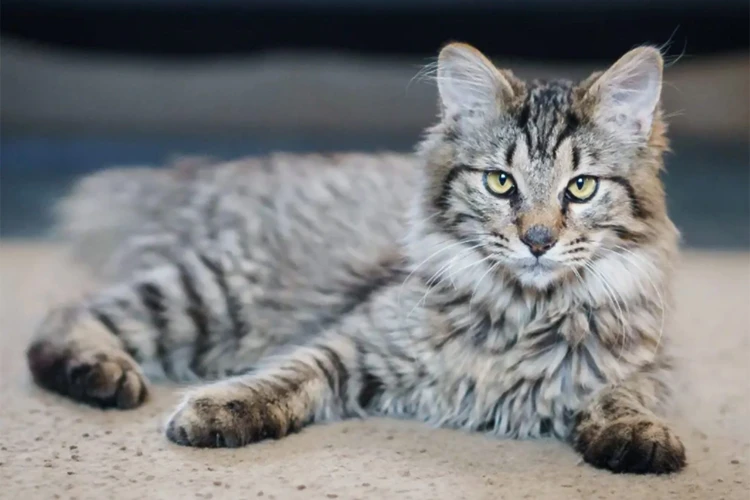
When it comes to choosing the right cat food for your American Bobtail, the key is to understand what’s on the label. With so many different brands and types of cat food available, it can be overwhelming trying to decide which one is best for your feline friend. However, there are a few key things to look for on a cat food label that can help you make an informed decision. By paying attention to ingredients, additives, and nutritional requirements, you can ensure that your cat is getting the high-quality nutrition they need to thrive. Let’s dive into what to look for on a cat food label to ensure that you’re making the right choice for your furry companion.
Cat Food Ingredients to Avoid
When it comes to feeding your American Bobtail, it’s essential to know which cat food ingredients are harmful or potentially harmful to their health. Here are a few things to watch out for on the label when selecting cat food:
- Artificial Preservatives: Preservatives are often used to prolong the shelf life of cat food, but some artificial preservatives like BHA, BHT, and ethoxyquin have been linked to health risks such as cancer.
- Artificial Colors and Flavors: While they may make the food look more visually appealing and tasty, artificial colors and flavors can trigger allergic reactions in some cats and may also have negative health effects.
- Grains: Cats are obligate carnivores and require a diet high in protein. Grains like wheat, corn, and soy are often used as fillers and are not a natural part of a cat’s diet, which can cause digestive problems and allergies in some cats.
- By-Products: By-products are animal parts that are not commonly consumed by humans, such as feet, beaks, and intestines. While these may be a cheap source of protein, they are often of lower quality and may contain harmful bacteria or toxins.
- Added Sugar: Added sugar isn’t a necessary ingredient in cat food and can lead to obesity, diabetes, and other health problems in cats. Look for alternative sources of carbohydrates instead.
It’s important to carefully read and understand the ingredients list when selecting cat food to ensure you are providing your American Bobtail with the nutrients they need without the harmful additives they don’t need.
Cat Food Ingredients to Embrace
As a cat owner, you want to provide your American Bobtail with a well-balanced, nutritious diet. Here are some cat food ingredients to embrace when selecting the right food for your feline friend:
- High-Quality Proteins: Look for cat food that contains named animal proteins such as chicken, turkey, beef, or fish as the first ingredient. These proteins provide essential amino acids that are crucial for your cat’s health and well-being.
- Healthy Fats: Fats are important for maintaining a healthy coat and skin for your cat. Choose cat foods that include healthy fats like omega-3 and omega-6 fatty acids.
- Complex Carbohydrates: While cats don’t need carbohydrates in their diet, complex carbohydrates like sweet potatoes, peas, and lentils can provide additional fiber and nutrients.
- Nutritious Fruits and Vegetables: Fruits and vegetables like blueberries, cranberries, pumpkin, and spinach are rich in antioxidants, vitamins, and minerals, and can help support your cat’s immune system and overall health.
- Probiotics: Probiotics in cat food can help support a healthy digestive system by promoting the growth of good bacteria in your cat’s gut.
- Natural Preservatives: Look for natural preservatives like tocopherols (vitamin E) or ascorbic acid (vitamin C) instead of chemical preservatives like BHA, BHT, or ethoxyquin. Natural preservatives are safer for your cat and help preserve the freshness of the food.
By embracing these ingredients, you can ensure that your American Bobtail is getting the essential nutrition they need to thrive. Reading cat food labels and understanding what ingredients to focus on can go a long way in providing your cat with the best diet possible.
Checking for Artificial Additives
One important aspect to look out for when reading cat food labels is the presence of artificial additives. These can include preservatives, colors, and flavors that are added to the food to enhance its appearance, taste, and longevity.
It’s important to note that not all artificial additives are harmful, but some of them can be. For instance, some artificial colors have been linked to hyperactivity and other behavioral issues in cats.
To help you identify artificial additives in your cat’s food, refer to the ingredient list on the label. Look for names of additives such as BHA, BHT, propyl gallate, ethoxyquin, and sodium nitrate, which are commonly used as preservatives.
Foods that contain by-products or meals may also contain artificial additives. For example, by-products such as meat meal may contain artificial flavors and colors to improve their palatability.
To avoid artificial additives, consider opting for cat foods that use natural preservatives such as vitamins C and E. Look for labels that state the food is free from artificial colors, flavors or preservatives.
Here’s a table to help you understand some common artificial additives you may come across in cat foods:
| Additive | Purpose |
|---|---|
| BHA and BHT | Preservative |
| Propyl gallate | Preservative |
| Ethoxyquin | Preservative |
| Sodium nitrate | Preservative |
| Caramel color | Artificial coloring |
| Titanium dioxide | Artificial coloring |
| Meat by-products | May contain artificial additives |
By being aware of the presence of artificial additives in your cat’s food, you can make informed decisions when it comes to providing your American Bobtail with a healthy, nutritious diet.
Considering Special Nutritional Needs
As with any living being, cats have unique nutritional needs that depend on a variety of factors including genetics, age, and health conditions. When it comes to cat food labels, it’s important to pay attention to any special nutritional needs your American Bobtail may have.
1. Life Stage – Kittens, adult cats, and senior cats all have different nutritional needs. Look for cat food labels that are specially formulated for your cat’s life stage. These formulas are specifically designed to meet the nutritional requirements of each stage of life.
2. Health Conditions – If your American Bobtail suffers from a health condition, such as kidney disease or diabetes, it’s important to choose cat food that caters to their specific needs. Look for cat food that is low in phosphorus and high in protein if your cat has kidney disease. On the other hand, if your cat has diabetes, look for cat food that is high in protein and low in carbs.
3. Allergies and Sensitivities – Just like humans, cats can suffer from food allergies or sensitivities. Common food allergens for cats include chicken, dairy, and fish. If you suspect that your cat has a food allergy or sensitivity, look for cat food that is free from common allergens or has limited ingredients to help you identify the cause of the issue.
4. Activity Level – Just like with humans, the amount of food your cat needs depends on their activity level. If your American Bobtail is a high-energy cat, they may need more calories than a cat that tends to be more sedentary. Look for cat food labels that offer formulas specifically designed for active cats or that provide feeding guidelines based on your cat’s weight, activity level, and age.
5. Breed Specific Needs – While all cats have similar nutritional needs, some breeds may have specific requirements. For example, some breeds, like the Siamese, may be more prone to dental issues, while others, like the Maine Coon, may be more prone to joint problems. Look for cat food that is specifically designed for your cat’s breed to help address any potential issues.
By considering your American Bobtail’s special nutritional needs, you can choose cat food that will help keep them healthy and happy.
Understand Cat Food Regulations
As pet owners, we want to ensure that the food we give to our furry friends is safe, nutritious, and meets the necessary regulations. With so many brands and types of cat food available in the market, it can be challenging to determine which one is best for our American Bobtail. Understanding cat food regulations can help us navigate the choices and select a quality product. Let’s explore the various regulations and guidelines that are in place to ensure the safety and nutritional content of cat food.
FDA Regulations for Cat Food
The FDA (Food and Drug Administration) is responsible for regulating cat food to ensure that it is safe for consumption. The regulations enforced by the FDA include guidelines for product labeling, ingredient safety, and manufacturing facilities.
Here are some of the important regulations implemented by the FDA for cat food:
| Regulation | Description |
|---|---|
| Ingredient Listings | All cat food packaging must include a list of ingredients in descending order by weight. This information is crucial for cat owners who want to ensure that their pet is getting the proper nutrition. |
| Guaranteed Analysis | The FDA requires cat food manufacturers to provide a guaranteed analysis of the nutrients present in the product. This analysis includes the minimum and maximum percentages of crude protein, crude fat, crude fiber, and moisture. |
| Contaminant Testing | Manufacturers must test their products for contaminants such as heavy metals, pesticides, and bacteria. Cat food that fails to meet safety standards is recalled by the FDA. |
| Facilities Inspection | The FDA inspects cat food manufacturing facilities to ensure they meet safety and cleanliness standards. This helps prevent contamination and other health hazards. |
It’s important for cat owners to keep these regulations in mind when selecting a cat food brand. By choosing a brand that complies with FDA regulations, you can rest assured that the food you’re feeding your furry friend is safe and nutritious.
AAFCO Standards for Cat Food
When shopping for cat food, it’s essential to look for products that meet the AAFCO (Association of American Feed Control Officials) standards. These standards ensure that the food contains all the necessary nutrients needed for your American Bobtail to maintain a healthy and balanced diet.
The AAFCO Nutrient Requirements for Cats
The AAFCO provides a minimum and maximum range of essential nutrients that should be present in cat food. Here is a table showing the nutrient categories and their minimum requirements:
| Nutrient Category | Minimum Requirement |
|---|---|
| Protein | 8.5% |
| Fat | 5.5% |
| Fiber | 1.5% |
| Moisture | 78% |
| Ash | 3% |
| Calcium | 0.1% |
| Phosphorus | 0.08% |
| Magnesium | 0.025% |
| Taurine | 0.1% |
| Vitamin A | 5,000 IU/kg |
| Vitamin E | 50 IU/kg |
| Thiamine | 0.1 mg/kg |
| Riboflavin | 0.15 mg/kg |
| Pantothenic acid | 0.5 mg/kg |
| Niacin | 2.0 mg/kg |
| Pyridoxine | 0.1 mg/kg |
| Folic Acid | 0.05 mg/kg |
| Vitamin B12 | 0.1 mg/kg |
| Choline | 1200 mg/kg |
| Iron | 40 mg/kg |
| Copper | 4.0 mg/kg |
| Manganese | 1.3 mg/kg |
| Zinc | 35 mg/kg |
| Iodine | 0.5 mg/kg |
| Selenium | 0.3 mg/kg |
AAFCO Feeding Trials vs. Formulation
There are two ways that cat food can be approved by AAFCO – feeding trials and formulation. Formulation approval means that the food has been analyzed and meets the AAFCO nutrient requirements, but the food hasn’t been fed to cats to ensure that they will actually eat it.
Feeding trials, on the other hand, require that the food be fed to cats for a certain period to ensure that it is safe, palatable, and provides the necessary nutrients. While feeding trials are a more reliable approval process, they are also more expensive for the pet food manufacturers.
Avoiding Misleading Claims
It’s important to note that if a cat food claims that it is “complete and balanced,” it means that it meets the AAFCO nutrient requirements. However, just because a food meets AAFCO standards, it doesn’t mean that it’s the ideal food for your American Bobtail. It’s still essential to consider the ingredients, the quality of the food, and your cat’s individual nutritional needs when making your cat food selection.
Understanding Marketing Claims
When you’re looking at cat food labels, you’ll see a lot of marketing claims. However, not all of these claims are accurate and it’s important to understand what they really mean. Here are some common marketing claims you may encounter on cat food packaging:
- Organic: This term means that the ingredients were grown without the use of pesticides, synthetic fertilizers, or genetically modified organisms (GMOs). Look for products labeled “Certified Organic” to ensure that they meet strict organic standards.
- Natural: This term doesn’t have an official definition, but it generally means that the ingredients are minimally processed and don’t contain any artificial flavors, colors, or preservatives.
- Grain-Free: This claim has become popular in recent years, but it’s important to keep in mind that cats don’t necessarily need a grain-free diet. Make sure that the grain has been substituted with another carbohydrate, like potatoes or peas, and not just removed.
- Gluten-Free: This claim is important for cats with grain sensitivities, but it doesn’t automatically mean that the food is healthier. Look for a well-rounded and balanced diet.
- Meat as the First Ingredient: This claim means that the first ingredient listed on the label is a type of meat. However, this doesn’t necessarily mean that the food is high in protein or of high quality overall.
- Weight Management: This claim is important for cats that need to lose or maintain a healthy weight. However, it’s important to also look at the other ingredients to make sure the food is still nutritionally balanced.
It’s important to keep in mind that marketing claims can be confusing and sometimes misleading. Always read the ingredient list and guaranteed analysis to get a better understanding of the product’s nutrition.
Common Misconceptions to Avoid
There are several common misconceptions about cat food labels that pet owners should be aware of. Here are some of the most important ones to avoid:
- “Organic” means the food is healthier: While organic foods may be produced without certain harmful pesticides and chemicals, it doesn’t necessarily mean that the food is more nutritious or of higher quality than non-organic options.
- “Grain-free” is always better: Many pet owners assume that grain-free cat food is healthier, but this isn’t always the case. In fact, grains like rice and corn can be nutritious sources of carbohydrates for cats, as long as they’re included in the right amounts and balanced with other ingredients.
- Cats need a high-protein, all-meat diet: While cats are obligate carnivores and require protein in their diet, it’s important to remember that they also need other nutrients, such as vitamins and minerals, which may not be present in a purely meat-based diet.
- “Premium” or “holistic” foods are always better: These terms don’t have any specific regulatory meaning, and there’s no guarantee that a food labeled as “premium” or “holistic” is actually better than other options on the market.
- All “by-products” are bad: While it’s true that some low-quality by-products can be unhealthy for cats, there are also many high-quality by-products that are perfectly safe and nutritious. For example, organ meats like liver and kidney are often included in by-products and contain valuable nutrients that cats need.
- Price is always an indicator of quality: While it’s true that some more expensive cat foods may be of higher quality than cheaper options, this isn’t always the case. It’s important to read the label and evaluate the ingredients and nutrient content of a food before assuming that it’s better simply because it costs more.
By avoiding these common misconceptions and understanding what to look for on a cat food label, pet owners can ensure that they’re providing their American Bobtail with the high-quality nutrition they need to thrive.
Conclusion
After reading this guide, you now have the tools to become a savvy cat owner who can confidently read cat food labels and choose the best nutrition for your American Bobtail. Remember to always check the ingredients list and ensure that high-quality protein sources are at the top. Avoid any cat food with low-quality fillers or artificial additives, and always consider your cat’s special nutritional needs.
It’s important to keep in mind that cat food regulations and marketing claims can be confusing, so take the time to familiarize yourself with FDA regulations and AAFCO standards. Don’t fall for common misconceptions or flashy marketing claims that may not actually provide your cat with the nutrition he or she needs.
Overall, by utilizing the tips and understanding the information presented in this article, you can ensure that your American Bobtail is receiving the quality nutrition he or she deserves. A healthy diet will not only improve your cat’s overall health, but also their energy levels, coat quality, and long-term well-being. So, take the time to read those labels and make informed decisions that will benefit your feline friend in the long run.
Frequently Asked Questions
1. Can I trust the ingredient list on cat food labels?
Yes, the ingredient list is required by law and manufacturers cannot list ingredients that are not in the product.
2. Why is it important to look for a named protein source as the first ingredient?
A named protein source as the first ingredient ensures that the food has a high-quality source of protein for your cat.
3. Are natural and organic cat foods better for my cat?
Not necessarily. The terms “natural” and “organic” do not guarantee nutritional value, and some natural ingredients can be harmful to cats. It’s important to read the label and understand the ingredients.
4. Do I need to avoid by-products in cat food?
No, not necessarily. By-products can provide valuable nutrients for your cat, but it’s important to ensure that they are high-quality by-products from a named source.
5. How much protein should be in my cat’s food?
At least 30% protein is recommended for adult cats, with higher amounts recommended for kittens and active cats.
6. Are grains bad for cats?
No, not necessarily. Some cats do have allergies to grains, but they can be a valuable source of carbohydrates in cat food.
7. Can I feed my cat a vegetarian or vegan diet?
No, cats are obligate carnivores and require meat in their diets for essential nutrients. A vegetarian or vegan diet can be harmful to their health.
8. Should I be concerned about artificial colors and flavors in cat food?
Yes, some artificial colors and flavors can be harmful to cats and provide no nutritional value. It’s important to choose cat food with natural ingredients whenever possible.
9. Is it okay to free-feed my cat?
Free-feeding can lead to overeating and obesity in cats. It’s recommended to feed your cat smaller, measured meals throughout the day.
10. How do I know if a cat food meets AAFCO standards?
The cat food will have a statement on the label stating that it meets AAFCO nutrient profiles for all life stages or a specific life stage.

